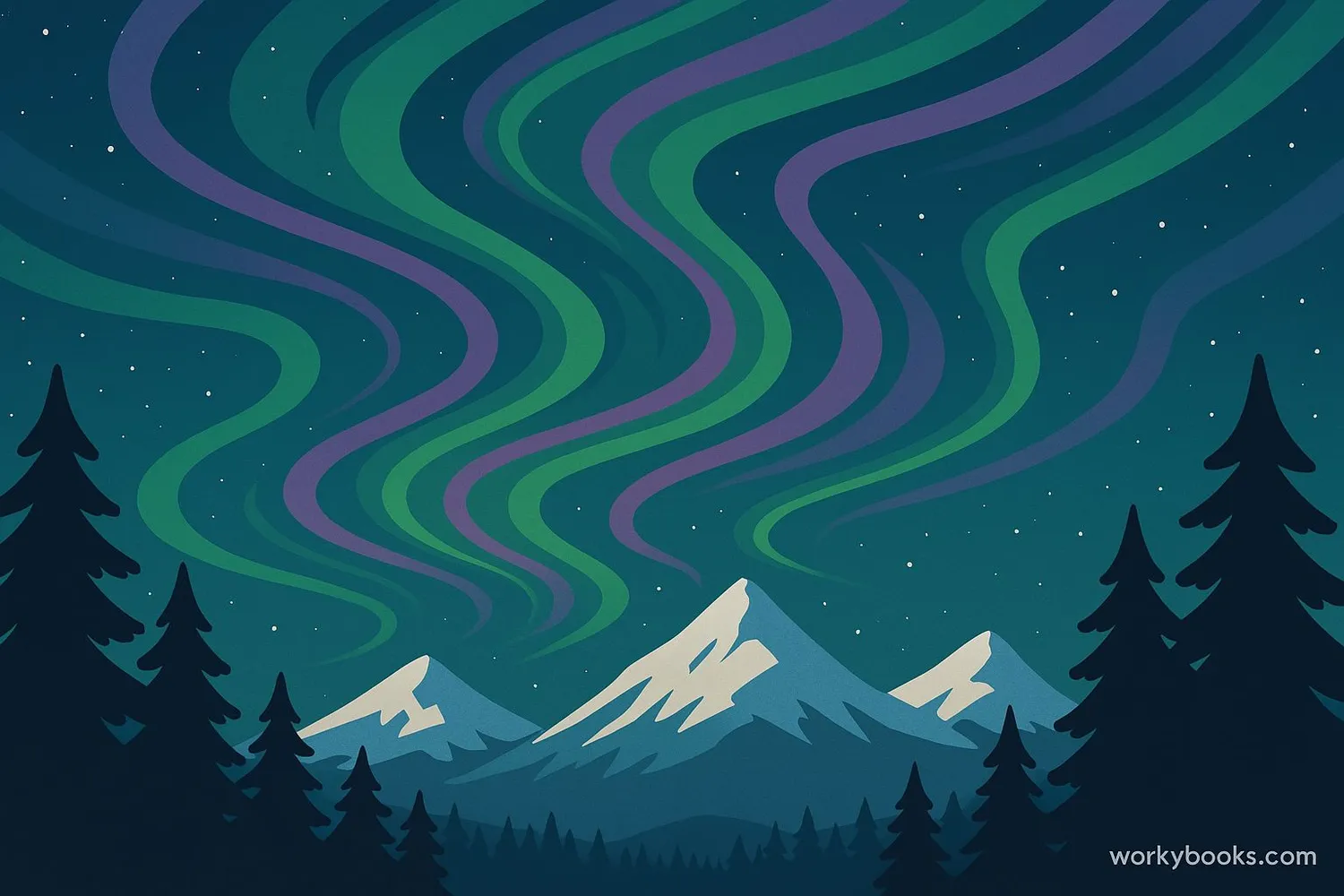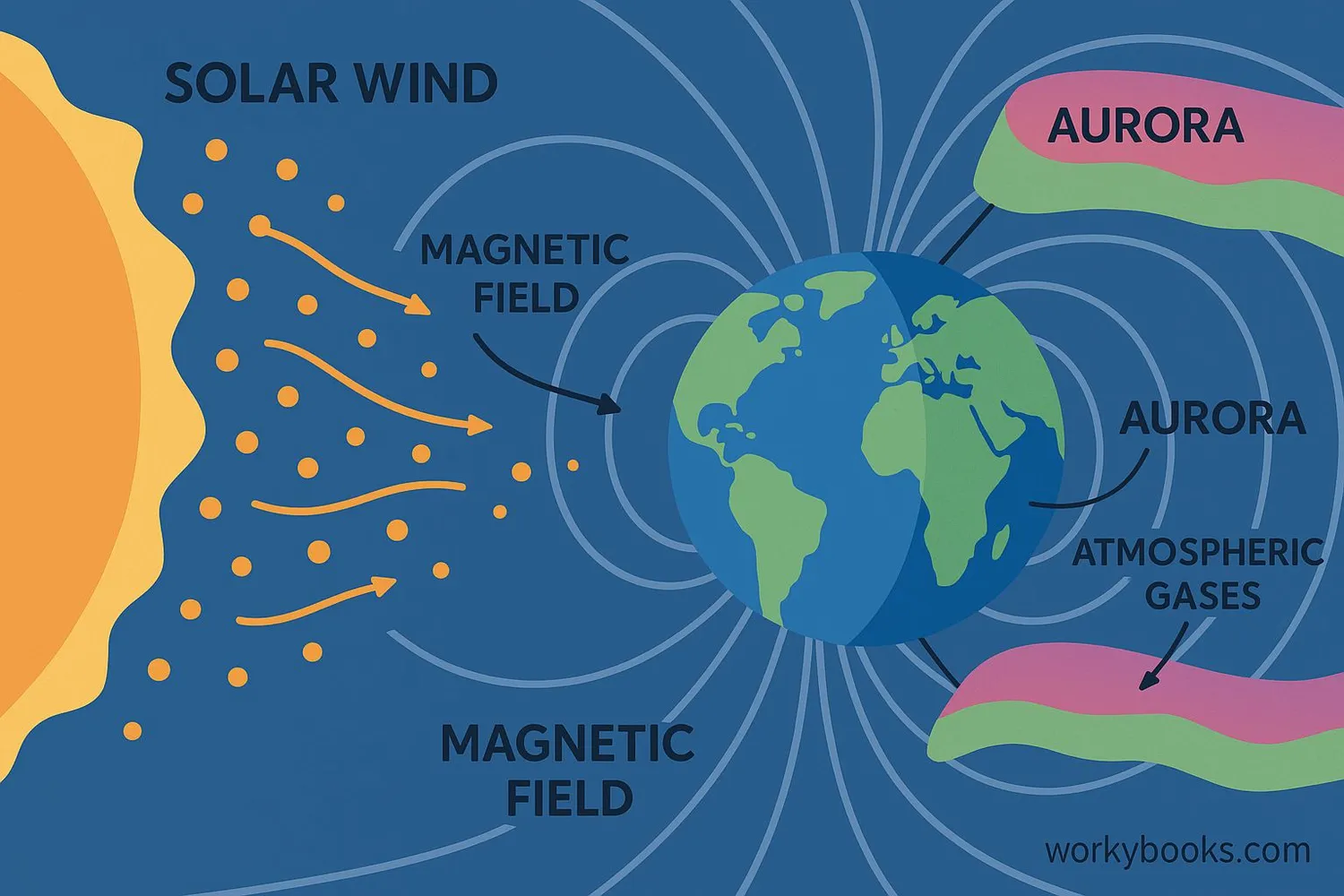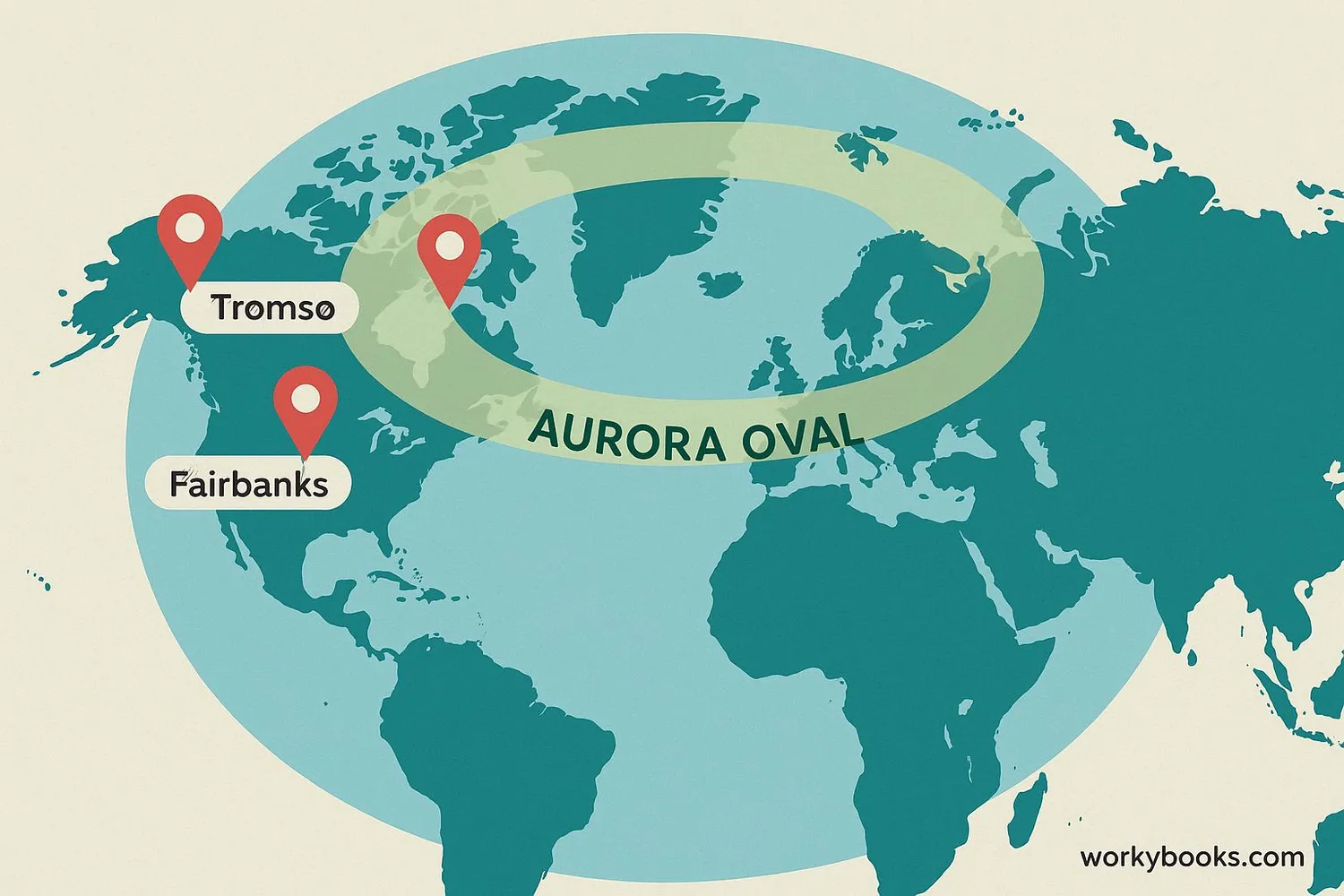The Northern Lights - Definition, Examples, Quiz, FAQ, Trivia
Discover the science behind Earth's most dazzling light show
What Are Northern Lights?

The Northern Lights (also called Aurora Borealis) are nature's most spectacular light show! These colorful dancing lights appear in the night sky near Earth's polar regions.
Northern lights occur when tiny particles from the Sun collide with gases in Earth's atmosphere. This creates beautiful glowing colors that can look like shimmering curtains or swirling ribbons across the sky. The most common color is green, but you might also see pink, purple, red, or blue lights!
Did You Know?
The Southern Hemisphere has its own version called the Aurora Australis (Southern Lights)!
How Northern Lights Work

The northern lights might look like magic, but they're actually a fascinating science process! Here's what happens:
Solar Wind
The Sun constantly sends out charged particles (solar wind)
Magnetic Field
Earth's magnetic field guides these particles toward the poles
Atmosphere
Particles collide with oxygen and nitrogen in our atmosphere
Energy Release
Collisions release energy as colorful light (auroras)
The colors tell us which gases are being excited:
• Green - Oxygen (most common color)
• Red - High-altitude oxygen
• Blue/Purple - Nitrogen
Solar activity like sunspots and solar flares can make the northern lights more intense and visible farther south!
Solar Connection
The Sun goes through an 11-year cycle of activity - auroras are most spectacular during "solar maximum" periods!
Best Places to See Northern Lights

The northern lights are visible in an oval-shaped zone around Earth's magnetic north pole. Some of the best places to see them include:
Tromsø, Norway
Called the "Capital of the Northern Lights" with frequent displays
Fairbanks, Alaska
Located directly under the aurora oval with clear winter skies
Yellowknife, Canada
Remote location with minimal light pollution for great viewing
Best time to see them:
• September to March (long winter nights)
• Between 10 PM and 2 AM local time
• During new moon phases (darker skies)
• When solar activity is high
You'll need clear, dark skies away from city lights. The lights can appear any time, but are most active around midnight.
Northern Lights Quiz
Test your knowledge about the northern lights with these science questions:
Frequently Asked Questions
Here are answers to common questions about the northern lights:
Amazing Northern Lights Facts
Discover some incredible facts about Earth's dazzling light show:
Ancient Observations
The earliest known record of auroras comes from a 30,000-year-old cave painting in France! Ancient people often thought they were spirits, dragons, or messages from the gods.
Other Planets
Jupiter and Saturn have auroras too - and they're much more powerful than Earth's! Jupiter's auroras are permanent and large enough to cover our entire planet.
Energy Power
A single aurora display can release more energy than a large earthquake! But this energy spreads over such a large area that we don't feel its effects on the ground.
Cultural Names
Different cultures have beautiful names for the lights: "Merry Dancers" (Scotland), "Revontulet" (Finnish for "fox fires"), and "Dance of the Spirits" (some Native American tribes).


